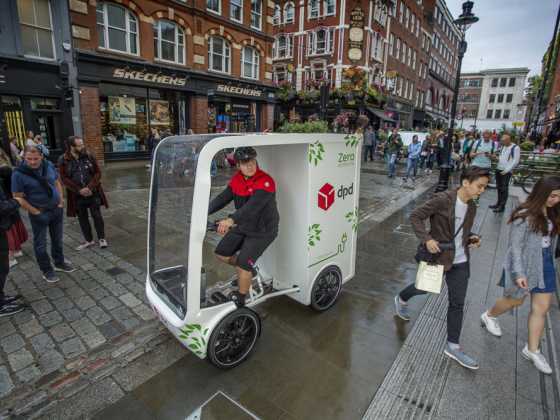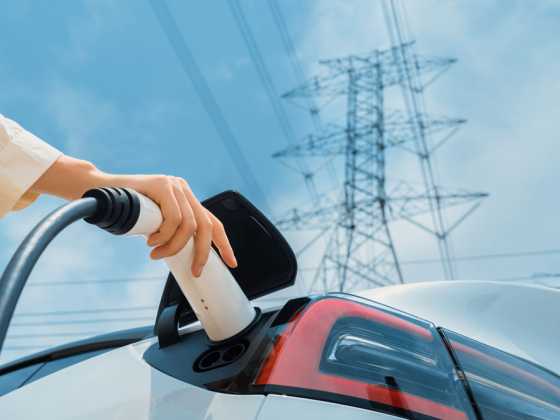The rising complexity of the battery industry

The push for greater adoption of hybrid and electric vehicles has focused attention on battery technologies. So what does the future look like for electric battery technology, and what challenges need to be overcome?
Written by Kurt Baes, Michael Kolk, Florence Carlot, Adnan Merhaba and Yuma Ito, Arthur D. Little
The future battery industry is likely to be much more complex than that of the past. Partnerships between existing players and new entrants, as well as different types of organisations, from battery manufacturers to automotive companies, are becoming vital to innovation and success.
The last two years have seen over $13.7 billion in battery-related investments and acquisitions – such as Tesla/Panasonic building a 35 GWh ‘gigafactory’ to produce batteries, Total acquiring Saft for $1.1 billion and Daimler planning $1.1 billion of investment over the next five years.
The pace of investment is ever-increasing – in June 2018 alone, energy giant BP announced it had bought Chargemaster, the UK’s largest charging company, while Jaguar Land Rover said it would invest $18 billion in new products over the next three years, a substantial percentage of which would be EV-related.
At the same time, current technologies are not enough to unleash the full potential of electric vehicles – innovation is required to drive the improved performance and price necessary for subsidy-free, mass-market adoption of EVs. Based on industry-expert assessments, at Arthur D. Little we estimate that to make EVs price‑competitive with internal combustion engine (ICE) vehicles without requiring subsidies, battery packs need to cost $100/kWh. Yet, current lowest-cost estimates put prices between $190 and $250/kWh.
So, what will the winning strategies be, in terms of both companies and partnerships and future technologies? Looking specifically at the automotive market, we can draw four key conclusions.
There will be no single solution
It is vital to understand that the battery market is made up of multiple applications, each with different and very specific needs. That means, in our view, that no single technology is likely to ultimately dominate the industry at large.
This is true within automotive. For example, it is easy to overlook that the biggest battery application is still starter, lighting & ignition (SLI) for every vehicle with an internal combustion engine. And this broadly relies on the same lead-acid technology used within the first rechargeable battery, which was invented in 1859.
Different sub-sectors in the EV market also have distinct requirements. With hybrid electric vehicles (HEVs), the smaller relative capacity of the batteries makes energy density and capital cost less relevant. However, as the battery is charged and discharged frequently and powerfully through braking, it has to have high power density, extremely short charging time, and a long cycle lifetime, which requires thousands of cycles.
Compared to HEVs, a plug-in hybrid electric vehicle (PHEV) has a battery that can also be charged by plugging into an external electricity source. These typically have much larger capacity, enabling the vehicle to drive fully electric for short distances. This leads to requirements for lower capital cost and better energy density, while power density and cycle lifetime are of less concern.
Full EVs no longer have ICEs, and thus require much larger batteries to deliver sufficient range for drivers, which makes capital cost and energy density their most important needs. EVs also require batteries with high reliability (as the vehicle can no longer fall back on the ICE) and good cycle lifetimes of around 1,000 cycles, which enable them to last for the same mileage as the rest of the car components.
Commercial EVs such as e-buses typically have increased safety needs, as the battery systems are large and the impact of a thermal runaway (battery meltdown) can be severe. Cycle lifetime is also of more importance than in PHEVs and EVs, as the buses are charged at least daily. In the case of buses for which fast charging is required, they can be fully charged multiple times a day, which makes cycle lifetime even more important.
Innovation takes time
Currently, lithium-ion (Li-ion) batteries dominate the automotive EV market and have seen rapid improvements in performance and cost due to a combination of greater economies of scale and increased research and development. However, there are still burning unmet needs. Next‑generation technologies are required to deliver a step change in performance of key battery characteristics.
A lot is happening here. Our recent analyses of hundreds of battery-related start-ups have revealed that a host of technologies using alternative materials are being developed. Within the Li-ion space this is primarily focused on three areas: silica anodes, advanced cathodes and solid-state electrolytes.
The solid-state electrolyte is the strongest contender for innovation. It replaces the current electrolyte system, unlocking the use of new cell components and delivering benefits in terms of greater energy density and improved battery safety.
The most likely result of this innovation will be the emergence of a next generation of solid-state Li-ion technologies, starting in high‑end consumer electronics and then gradually spreading to EVs. This will take time – it is worth remembering that while Li-ion batteries currently dominate the EV market, the previous generation of NiMH batteries are not only still being produced, but also expected to remain available for another five to 10 years.
Partnerships are crucial
We are seeing the rise of a complex series of ecosystems, which is also demonstrated by a threefold increase in patent filings – up from 35,000 in 2010 to nearly 93,000 in 2016. A growing number of these are joint filings between research institutions, companies developing battery technology, and businesses using battery technology within applications, such as automotive, electronic devices and utilities.
This means that companies, whether new entrants or existing businesses, face significant risks if they are to successfully carve out market positions. While these risks vary depending on the companies’ positions in the value chain, victorious players will need to manage their way through complex ecosystems, pick the right technologies to back, secure necessary knowledge and intellectual property, and ensure that they can operate at scale in their chosen areas. This must all be done within a traditionally conservative and risk-averse industry.
The risks are high
Not all players in the battery market will be successful in terms of both technology choices and partnering strategies. Some parts of the value chain, such as battery cell manufacturing, have repeatedly seen operating margins fall below zero, driven by a need to build strong positions for the future, particularly through long-term agreements with automotive manufacturers.
And while the current increase in Li-ion production is lowering prices, this is a double-edged sword. It helps meet existing demand, but lengthens the commercialisation time for new technologies, as these have to have their costs reduced further in order to become economically viable.
Conclusion
The accelerating adoption of hybrid and electric vehicles (EVs) is focusing enormous attention on battery technologies.
We’re currently in the midst of an enormous boom in battery investment, with a huge range of players, from start‑ups to existing manufacturers, automotive companies, energy suppliers and
chemicals companies all spending heavily in order to meet predicted demand. The winners will benefit from substantial market share in a growing sector, while the losers will risk their very survival.
Expect many more announcements and increased investment, particularly as the EV market accelerates ahead of regulatory deadlines that mandates zero-emission vehicle






